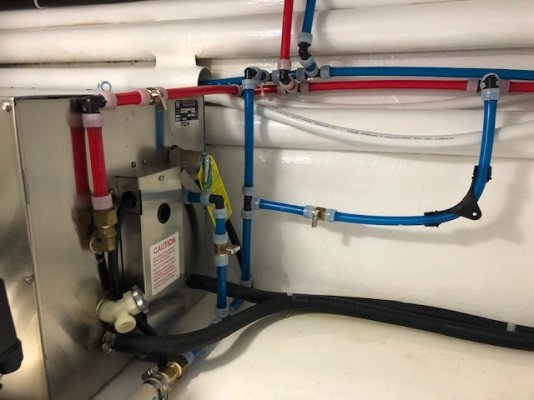mncruiser
Senior Member
My 2001 Mainship 390 has pex tubing, but from the factory came with the compression-screw on fittings that are all being replaced as I come across them with crimped connectors or shark-bite style if I’m unable to crimp something. As I’ve been doing this and staring at other various hoses I’ve been wondering, why not pex tubing and connectors more places?
I’m not advocating replacing anything like through hull water intake hose, I’ll stick with the marine water hardwall hose for that stuff.
What about all the super cheap corrugated type bilge discharge hose? They used the same stuff on most sink and any other type of drain I come across.
I also noticed my supply connections for the A/C-heat units are cheaper hose. I know most will say not skimp there and I agree, but I’ve thought about it.
Some places may be more challenging with bends and turns, and I’m not fond of adding connectors in any spot I can’t easily monitor. I’ve heard there is something called “flexi-pex” that may handle bends better.
I’d be curious about your thoughts on this. Thank you!
I’m not advocating replacing anything like through hull water intake hose, I’ll stick with the marine water hardwall hose for that stuff.
What about all the super cheap corrugated type bilge discharge hose? They used the same stuff on most sink and any other type of drain I come across.
I also noticed my supply connections for the A/C-heat units are cheaper hose. I know most will say not skimp there and I agree, but I’ve thought about it.
Some places may be more challenging with bends and turns, and I’m not fond of adding connectors in any spot I can’t easily monitor. I’ve heard there is something called “flexi-pex” that may handle bends better.
I’d be curious about your thoughts on this. Thank you!
Last edited:

